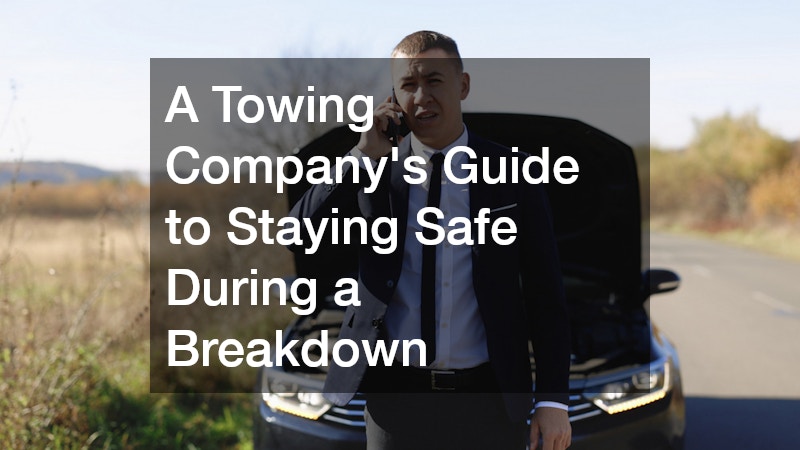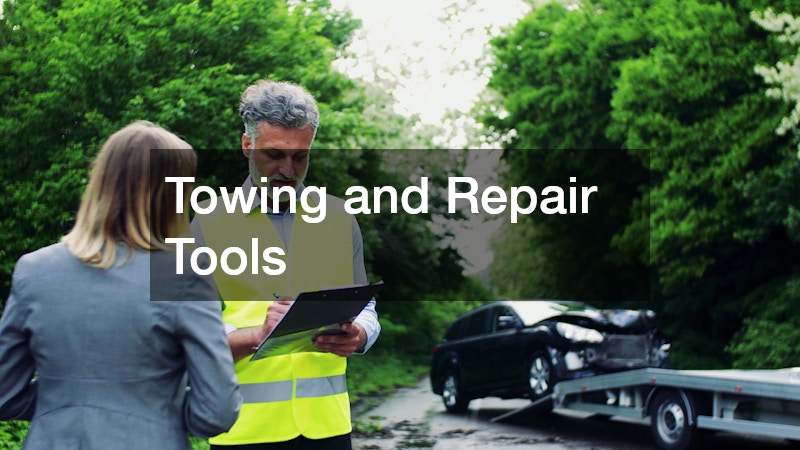
A Towing Company’s Guide to Staying Safe During a Breakdown

Breaking down can be one of the most stressful experiences for drivers, but with the right knowledge, you can ensure your safety and that of your vehicle. This guide provides insight into staying safe during a breakdown, offering expert advice from a local towing company. By understanding the crucial steps to take during these challenging moments, you can reduce potential risks and navigate the situation more effectively.
What to Do First When Your Vehicle Breaks Down
Ensure Personal Safety
Your safety should be your top priority. When your vehicle begins to malfunction, it’s crucial to move it to a safe location, such as the shoulder of the road or a nearby parking lot if possible. Once safely positioned, activate your hazard lights to alert other drivers of your presence, significantly reducing the risk of a collision.
While ensuring your safety, remain inside the vehicle with your seatbelt fastened if you are in a high-traffic area. This minimizes exposure to potentially dangerous traffic situations and provides a barrier between you and the roadway. Your vehicle’s visibility is essential; therefore, keeping your lights on enhances your safety, especially in low-light conditions.
Assess the Situation
Following the establishment of personal safety, the next step is to assess the situation. By performing a quick evaluation, you can identify potential issues with your vehicle, such as a flat tire, engine overheating, or electrical problems. This preliminary assessment can be vital when relaying information to towing services or roadside assistance.
Use your senses to gather information about your vehicle’s condition. Look for any visible signs of damage, strange smells that might indicate fluid leaks, or unusual noises that may point to mechanical issues. Your observations can provide valuable insights for professionals assessing the repair needs or towing requirements of your vehicle.
How to Safely Signal for Help
Use Emergency Signaling Devices
Equipping your vehicle with emergency signaling devices is a proactive measure to increase visibility and safety. Items like flares, cones, and reflective triangles can significantly enhance your presence, allowing other drivers to notice your vehicle from a distance. These devices are particularly effective at night or in poor weather conditions, where visibility is compromised.
Strategically placing these items in a pattern around your vehicle helps delineate a safe zone. This practice not only alerts passing motorists but also provides a clear signal to towing services or emergency response teams. Regularly checking the condition and expiration dates of these items ensures they are reliable when most needed.
Communicate with Towing Services
Communication is critical during a breakdown, as clear information can expedite the assistance process. Having the contact information of a reputable towing service readily available allows for quick communication during an emergency. When contacting these services, providing accurate details about your location and situation is crucial.
Use landmarks, mile markers, or GPS coordinates to help the towing services reach you efficiently. Consider utilizing roadside assistance programs that offer additional security and support during these vulnerable times. Sharing comprehensive details about the vehicular issue aids towing professionals in preparing the necessary equipment for effective assistance.
What to Have in Your Vehicle for Emergencies
Emergency Kit Essentials
An emergency kit is a fundamental part of vehicle preparedness, ensuring you are equipped to handle unexpected situations. Essential items include a first aid kit, which can address minor injuries until professional medical help arrives. Bottled water and non-perishable snacks offer sustenance if you experience prolonged delays.
Additional utility items, such as a flashlight with extra batteries, a rain poncho, and a blanket, can provide comfort and safety. These elements cater to various needs, from lighting your environment during nighttime breakdowns to extending warmth in cold weather. Tailoring your kit according to your region’s climate and driving conditions enhances its effectiveness and reliability.
Towing and Repair Tools
Having basic tools and repair equipment in your vehicle prepares you for minor roadside issues. A jack and a spare tire are crucial for addressing flat tires safely when professional help is unavailable or delayed. Other handy tools, including a wrench, screwdriver, and jumper cables, enable basic troubleshooting tasks.
While these tools can be beneficial, it’s important to understand your capability limits and avoid complex repairs. Inappropriate tool use or inadequate repair skills can lead to further damage or safety hazards. Education on basic tool usage and regular maintenance checks on your tools ensures they remain functional and support you effectively when needed.
While vehicle breakdowns can be daunting, staying informed and prepared plays a significant role in ensuring safety. Following these guidelines and understanding the importance of preparation can greatly diminish the stress and danger associated with these situations. Keep this guide on hand and share it with fellow drivers to promote safer road environments for everyone. Utilizing the right tools and maintaining effective communication with assistance services can transform a potentially hazardous experience into a manageable event.
